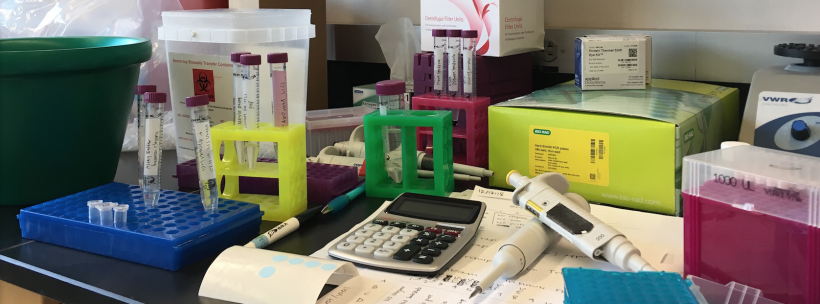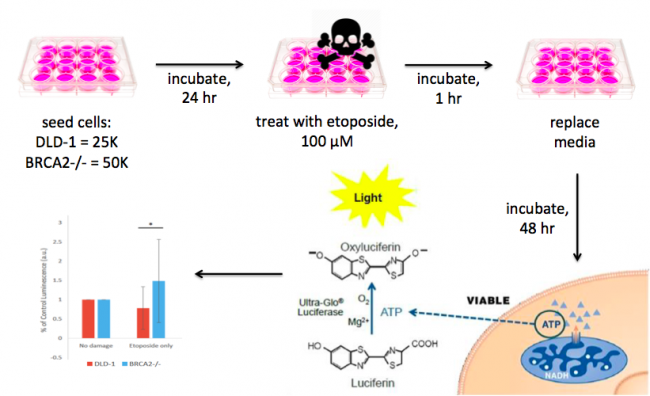20.109(S19):Design cell viability experiment and complete RNA-seq data analysis (Day6)
Contents
Introduction
Today you will finalize the design for your cell viability experiment and seed cells in preparation for etoposide treatment later this week / next week.
Experimental design refers to the process by which the details of an experiment are organized to ensure that the data collected are appropriate and answer the correct question. In an experiment, a treatment is intentionally imposed on a sample such that the outcome(s) can be observed. You should consider these points when designing an experiment:
- Treatments should be administered in measurable levels. The level, or amount, of treatment must be conserved across samples to limit unintended variability in the results.
- Controls should be included. The controls, or untreated samples, are a baseline to which the treated samples are compared.
- In the negative control group, no result is expected. This treatment will lack enzyme or other important factor necessary for the result / reaction that is being tested.
- In the positive control group, an expected result is generated to ensure that you can see what you are testing.
- Each experiment should have only one variable. If multiple variables (e.g. treatments, conditions, etc) are included in a single experiment, the results will be inconclusive because the outcome may be attributed to any of the variables within the experiment.
- Replicates should be included. The replicates used in experiments can be either technical or biological. Technical replicates test for error introduced by the researcher. Biological replicates account for the variance inherent in biological systems and test for the reproducibility / consistency of a phenotype or response.
Designing a successful experiment requires time, effort, and practice. Today you will work with the Teaching faculty to design an experiment based on the research question you developed in the previous laboratory session.
Protocols
Part 1: Finalize cell viability experimental approach
Each group will meet with a member of the Teaching faculty to discuss the experimental conditions that will be used in a cell viability experiment. Remember, the goal of this experiment is to further probe the surprising results from last year that suggest etoposide treatment promotes growth of BRCA2-/- cancer cells. Specifically, the data showed that the BRCA2-/- null populations increased by 50% after treatment and DLD-1 cell populations decreased by 25% after treatment.
As a reminder, the experimental approach used in the previous experiment is shown below:
During your discussion with the Teaching faculty you will schedule days / times for the following: 1) seeding the DLD-1 and BRCA2-/- cells, 2) etoposide treating the cells, and 3) harvesting the cells for the viability assay.
In addition, you will work with your partner to write a protocol that lists all of the steps for your experimental design. This protocol should be submitted to the Teaching faculty by the end of the laboratory session today.
Part 2: Complete RNA-seq data analysis
Today you will complete the final RNA-seq data analysis exercise. The goal of this exercise is to assist you in preparing the gene expression data for your Research Article.
Complete the "Analysis of RNA-seq Data Exercise" developed by Amanda Kedaigle & Prof. Ernest Fraenkel linked here.
Next day: Journal club presentations

